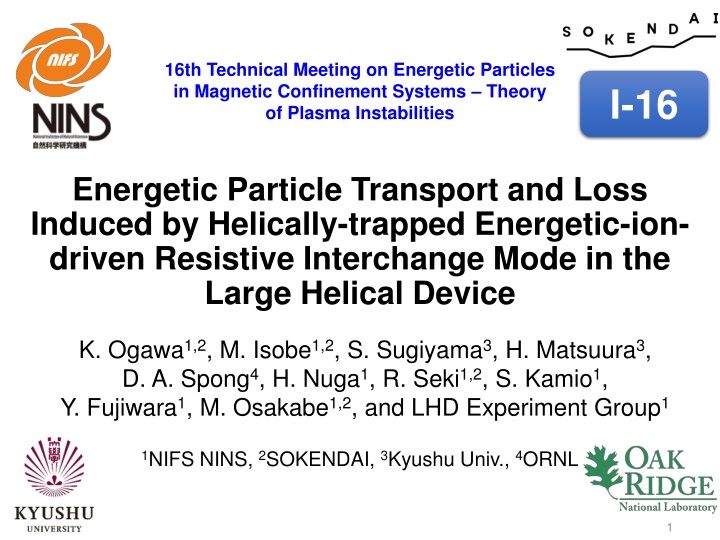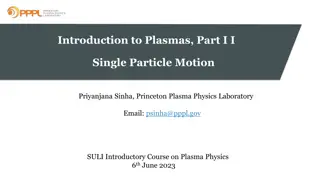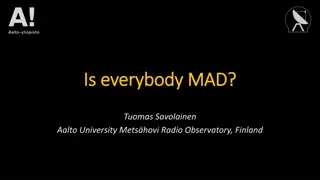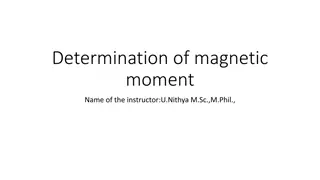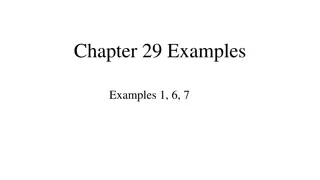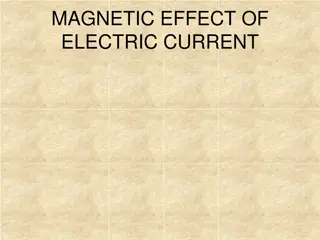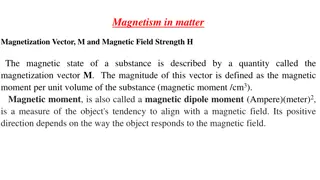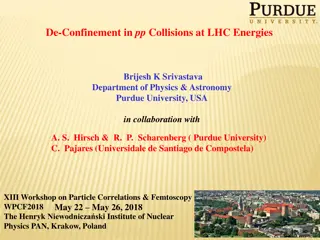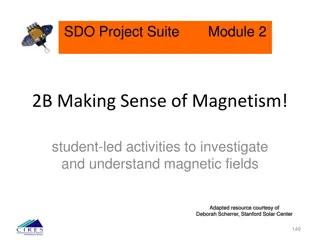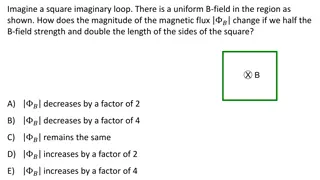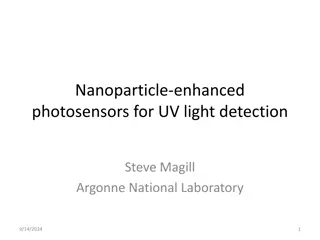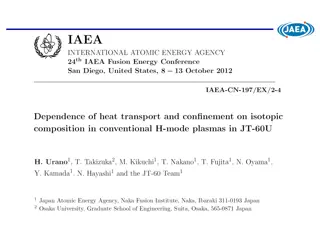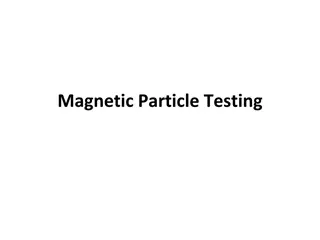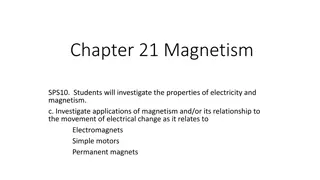Study on Energetic Particle Transport and Loss in Magnetic Confinement Systems
Investigation into energetic particle transport and loss induced by helically-trapped energetic-ion-driven resistive interchange modes in the Large Helical Device (LHD) for sustaining high-temperature and high-density plasmas. Utilizing neutron diagnostics and comprehensive neutron monitors, this study explores the impact of these instabilities on beam ion confinement, aiming to enhance the ion temperature state and promote efficiency in nuclear fusion reactions.
Download Presentation

Please find below an Image/Link to download the presentation.
The content on the website is provided AS IS for your information and personal use only. It may not be sold, licensed, or shared on other websites without obtaining consent from the author.If you encounter any issues during the download, it is possible that the publisher has removed the file from their server.
You are allowed to download the files provided on this website for personal or commercial use, subject to the condition that they are used lawfully. All files are the property of their respective owners.
The content on the website is provided AS IS for your information and personal use only. It may not be sold, licensed, or shared on other websites without obtaining consent from the author.
E N D
Presentation Transcript
16th Technical Meeting on Energetic Particles in Magnetic Confinement Systems Theory of Plasma Instabilities I-16 Energetic Particle Transport and Loss Induced by Helically-trapped Energetic-ion- driven Resistive Interchange Mode in the Large Helical Device K. Ogawa1,2, M. Isobe1,2, S. Sugiyama3, H. Matsuura3, D. A. Spong4, H. Nuga1, R. Seki1,2, S. Kamio1, Y. Fujiwara1, M. Osakabe1,2, and LHD Experiment Group1 1NIFS NINS, 2SOKENDAI, 3Kyushu Univ., 4ORNL 1
Background and motive Sustainment of high-temperature and high- density plasmas is required for realizing the nuclear fusion reactor. Observation of EIC in LHD In LHD, the helically-trapped energetic-ion- driven resistive interchange modes (EIC) [*] are often excited by intensive perpendicular neutral beam injections. Accordingly, sustainment of the high ion- temperature state was limited. NPA In LHD D experiment, generated neutrons are dominated by neutrons coming from beam-plasma reactions. Time [s] The effect of the EIC on the beam ion confinement is studied by means of neutron diagnostics. * X.D. Du Nucl. Fusion 2016 2
The Large Helical Device and comprehensive neutron diagnostics NNB PNB Neutron Flux Monitor NNB 1 NNB PNB Rax=3.90 m, a~0.60 m Negative-ion based tangential NB (NNB) Positive-ion based perpendicular NB (PNB) M. Isobe et al 2018 Nuclear Fusion. K. Ogawa et al 2019 Nuclear Fusion. 3
Helically-trapped beam ion in LHD PNB DELTA5D A B B B A A A A B B A 1 A B B B B A A A PNB B The ion is trapped in the helical ripple and can move around the torus along the valley of magnetic field -> the poloidal structure Both PNBs mainly produce helically-trapped beam ion in the same valley -> steep gradient of beam ion pressure MORH: R. Seki et al 2010 Plasma and Fusion Res. 4 MORH
Vertical Neutron Camera1 Multichannel collimator Hematite-doped heavy concrete 11 sight lines Diameter of hole: 30 mm Fast neutron detector Stilbene fast neutron scintillator Diameter: 20 mm Height: 10 mm Photomultiplier tube H13698, Hamamatsu K.K. Data acquisition system APV-8102-14MWPSAGb, Techno AP Sampling frequency: 1 GHz Online and offline n-gamma discrimination, simultaneously MHz counting range operation 2.5 L Design to measure neutron emission profile under Sn of 1016 n/s 5 K. Ogawa et al 2018 Rev. Sci. Instrum.
Vertical Neutron Camera2 Multichannel collimator Hematite-doped heavy concrete 9 sight lines Diameter of hole: 50 mm Fast neutron detector EJ410 fast neutron scintillator Diameter: 2 inch Height: 0.625 inch Photomultiplier tube H7195, Hamamatsu K.K. Current amplifier Gain: 104 to 106 V/A (selectable) Bandwidth: 200 kHz Data acquisition system PXI-6133, National Instruments Sampling frequency: 1 MHz 1.5 L Design to measure neutron emission profile under Sn of 1014~1015 n/s 6
Typical fast ion density in LHD Helically-trapped beam ions Co-going transit beam ions VNC1 VNC2 VNC1 MORH MORH NNB PNB MORH In order to obtain helically-trapped beam ion transport/loss, we installed VNCs having vertical and diagonal sightlines. 7
Neutron emission profile in PNB heated plasma (VNC1) Line-integrated neutron emission profile Cf. Fast ion density MORH We inject deuterium PNB to produce helically-trapped beam ion. The line-integrated neutron emission profile obtained with pulse mode VNC has a flat profile in central cords (r/a<0.45) and has steep gradient around r/a of 0.5. consistent with expected by density profile of helically-trapped beam ion 8 K. Ogawa et al 2018 Plasma Phys. Control. Fusion
EIC discharge NNBs inject hydrogen beams and PNBs inject deuterium beams. The line-integrated density rapidly increases due to the carbon pellet injection at t of 4.63 s. Strong bursting EICs are clearly seen by the intensive PNB injection. EIC bursts associate with concurrent decreases of Sn. The decay of Sn becomes noticeably shorter due to the EIC burst. 9
Time evolution of neutron profile in EIC discharge We measured time evolution of line- integrated neutron emission profile in EIC discharge. In VNC1, neutron counting rate in central channel decreases significantly due to EIC. Neutron counting rate in edge channel stays almost the same. In VNC2, signal in relatively outer channel decreases dramatically due to EIC. Decay time is almost the same as the decay time of Sn. 10
Drop rate of neutron signal due to EIC - Sn Drop rate of signals due to EIC increases with EIC amplitude and reaches ~50%. 11
Effect of EIC on neutron emission profile (VNC1) Line-integrated neutron emission profile Fast ion density Before EIC, line-integrated neutron emission profile shows that the profile has a peak around R of 3.75 m which is consistent with fast-ion density calculated by MORH. Due to EIC, neutron counts in central channel decreases by ~ 40%. MORH 12
Effect of EIC on neutron emission profile (VNC2) Fast ion density Line-integrated neutron emission profile Before EIC, line-integrated neutron emission profile shows that the profile has two peaks around R of 3.45 m and 4.0 m which is consistent with fast-ion density. Due to EIC, neutron counts in edge channel decrease by ~30%. -> Loss of helically trapped energetic ion existing mainly in one side of helical ripple. MORH 13
Orbit following calculation scheme Te, ne, and Ti profile are obtained in experiment. Equilibrium is reconstructed using VMEC2000. Birth position of NB is calculated using HFREYA. Only deuterium NBI (NB4 and NB5) are included. Guiding center orbits in Boozer coordinates are followed by DELTA5D including magnetic fluctuation. VMEC2000 Equilibrium S. Hirshman et al 1991 JCP ne(r), Te(r), ni(r), Ti(r) HFREYA DELTA5D Orbit following D. A. Spong 2011 PoP Birth position of NB S. Murakami et al 1995 TFT Fast ion distribution and Neutron emission profile 14
Conditions for calculation #144801 t=4.8 s ne and Te is from Thomson scattering diagnostics. Ti is from charge exchange spectroscopy. Zeff = 3 (fully ionized carbon) is assumed for dilution of D. NB NB#4 (59 keV, 6.8 MW, D) NB#5 (68 keV, 8.3 MW, D) 15
Model of fluctuation We assumed EIC fluctuation as b= ( B) Peak position and width of eigenfunction is from ECE measurement [X. D. Du et al 2016 Nucl. Fusion]. EIC: t=4.860~4.862 s Frequency sweeping: 10 kHz to 5 kHz within 2 ms, as observed in experiment max is approximately evaluate as 2 b EIC [K. Ogawa et al 2012 Nucl. Fusion]. m = n = 1 16
Time evolution of neutron emission profile calculated by DELTA5D (VNC2) NB4 DELTA5D b_ _EIC_calc=10-3 T Continuous injection of NB5 EIC DELTA5D EIC: t=4.860~4.862 s 17
Time evolution of neutron signal calculated by DELTA5D DELTA5D - Sn DELTA5D EIC Neutron signal calculated by DELTA5D dramatically decrease with EIC mode, as observed in experiment. Drop rate of signal increases almost linearly with fluctuation amplitude. 18
Change of neutron emission profile due to EIC calculated by DELTA5D (VNC1) Line-integrated neutron emission profile DELTA5D Neutron signal of central channel decreases substantially due to the EIC. -> qualitatively agree with experimental result. 19
Change of neutron emission profile due to EIC calculated by DELTA5D (VNC2) Line-integrated neutron emission profile DELTA5D Two peaks appear as observed in experiment. Neutron signal corresponding to bottom of helical ripple decreases substantially due to EIC. 20
Summary The effect of energetic-ion-driven MHD mode on the beam ion confinement is studied by means of neutron diagnostics. VNC1 and VNC2 are installed in different cross sections in order to understand detail of energetic ion transport/loss due to EIC in LHD. EIC bursts induce, large drop of Sn and significant decrease of line-integrated neutron signal in particular channels of both VNCs. Helically trapped ions which excite EIC are lost due to the EIC bursts. Orbit following simulation DELTA5D including magnetic fluctuation are performed to understand the transport/loss of energetic ions. Significant decrease of VNC signal viewing bottom of helical ripple due to EIC is reproduced. Change of neutron emission profile shows that energetic ions are immediately lost by EIC. 21
